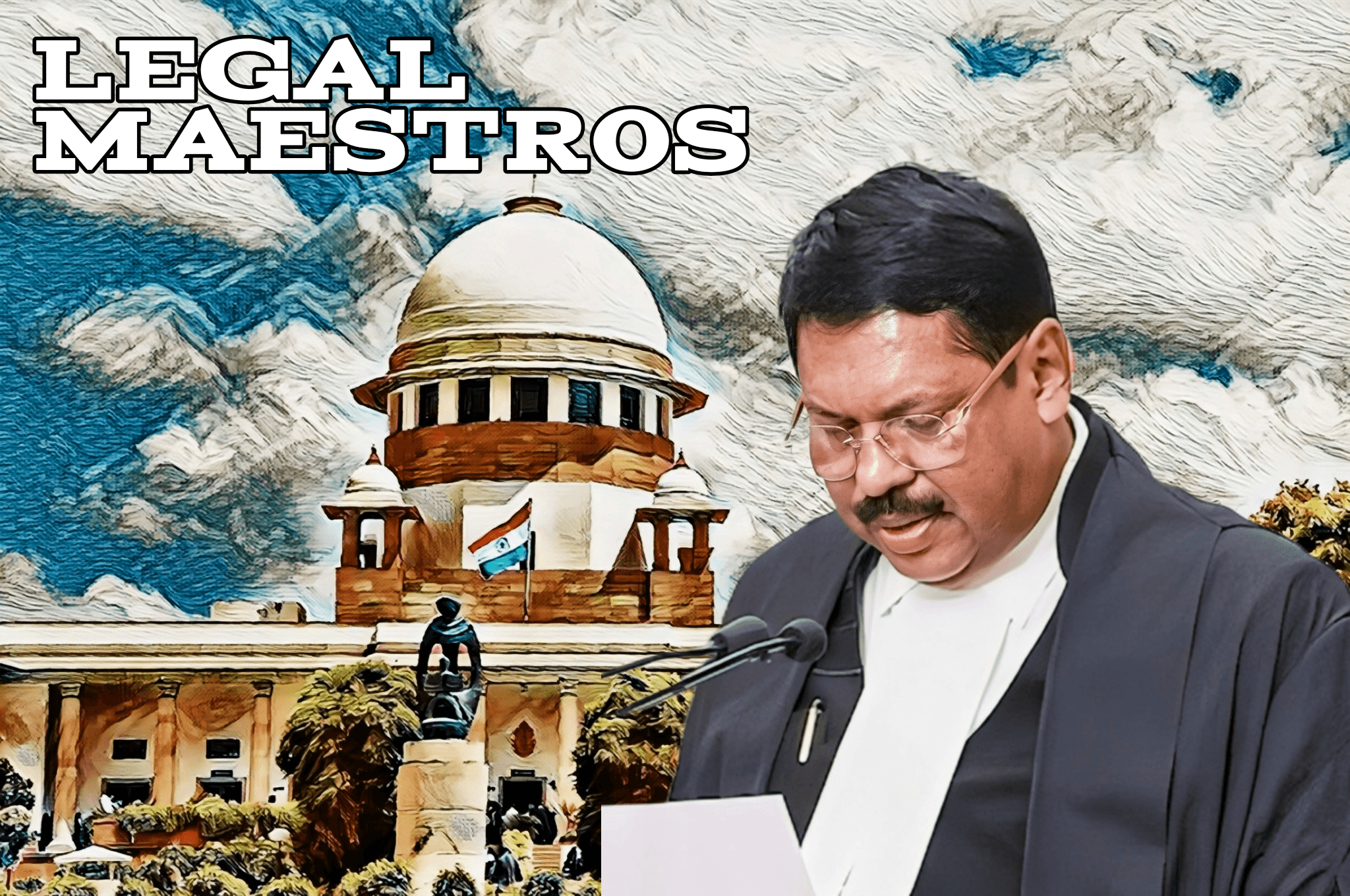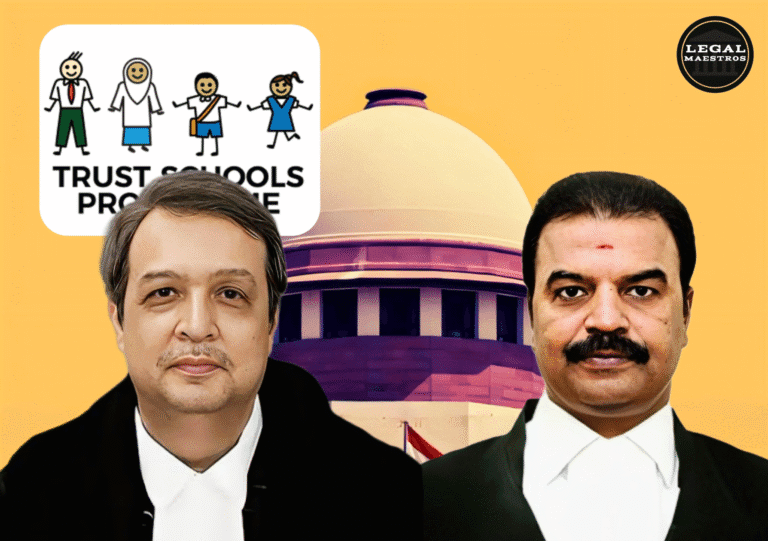
Vinod Bihari Lal was granted a favorable ruling by the Supreme Court of India on May 23, 2025, which resulted in the dismissal of the proceedings that had been initiated against him in accordance with the Uttar Pradesh Gangsters and Anti-Social Activities (Prevention) Act, 1986.
This decision can be considered a historic decision. During the course of the lawsuit, a critical analysis was conducted on the definition of the term “gang,” the circumstances under which the Act may be invoked, and the procedural safeguards that were established in the UP Gangsters Rules of 2021. In this article, the difficulties that were encountered, the provisions that were interpreted, and the relevance of the decision are discussed.
Historical Context and Facts
The appellant, Vinod Bihari Lal, was accused of perpetrating economic fraud, land grabbing, and school administration along with co-accused David Dutta. The case arose from various FIRs that were registered in 2017 and 2018 against Vinod Bihari Lal.
For any queries or to publish an article or post or advertisement on our platform, do call at +91 6377460764 or email us at contact@legalmaestros.com.
Document falsification, money embezzlement, and even an incitement to conduct acts of violence were all allegations that were made in these FIRs. On July 28, 2018, a First Information Report (FIR) was filed under Sections 2 and 3 of the Uttar Pradesh Gangsters Act, branding the appellant and David Dutta as leaders of an organized gang.
The FIR was assigned the number 850 of 2018. This assertion was further reinforced by a gang chart that was approved by the District Magistrate.
Lal filed a challenge against the proceedings and the issuing of non-bailable warrants in accordance with Section 482 of the Criminal Procedure Code (CrPC). However, the Allahabad High Court dismissed his applications, stating that the elements of a gang and anti-social behavior were there. In a fit of rage, he filed an appeal with the Supreme Court.
For More Updates & Regular Notes Join Our Whats App Group (https://chat.whatsapp.com/DkucckgAEJbCtXwXr2yIt0) and Telegram Group ( https://t.me/legalmaestroeducators )
In accordance with the Uttar Pradesh Gangsters Act of 1986, the term “gang”
The definition of “gang” as it is stated in Section 2(b) of the Act was the central issue that needed to be resolved by the judicial system. As per the provisions of this section, a gang must consist of a group of individuals who, either individually or collectively,
engage in acts of violence, threats, intimidation, coercion, or “otherwise” with the intention of disrupting public order or receiving undue material, financial, or other advantages. It is necessary that these actions are likewise considered to be anti-social activities, as described in clauses (i) to (xxv) of the specified section.
The Court highlighted that it is not sufficient to simply be associated with a group that is accused of committing a crime. It is necessary for the conduct of the group to clearly conform to this criteria and have the intention of either disrupting public order or seeking unlawful benefit.
It is not possible to extend the meaning of the phrase “or otherwise” to encompass any form of illegal action; rather, it must continue to maintain a connection to the goals and modes that are outlined in the statute.
The Analysis of the Base FIRs and the Significance of Their Use
A comprehensive examination of the five base FIRs that served as the basis for the gang chart was carried out by the Supreme Court.
Although some of these First Information Reports (FIRs) did relate to economic offenses that fall under Chapters XVI, XVII, and XXII of the Indian Penal Code, it was noted that these FIRs did not claim any instances of violence, threats, or disruptions to public order. Just one example:
In the case of FIR No. 476/2017, there was a fee embezzlement amounting to ₹13 crore; however, the Supreme Court has already dismissed the case.
A particular date of occurrence was not included in the First Information Report (FIR) No. 170/2017, which was related to the operation of an unrecognized school.
The First Information Report (FIR) number 726/2017 contained a hazy charge of inciting violence, which was not supported by any substantial evidence.
Both the First Information Report (FIR) No. 761/2017 and the FIR No. 244/2017 featured charges of land scams and abuse of authority inside an education board.
The legislative definition of a gang was not satisfied by any of these, either for each of them individually or for the group as a whole. The fact that the co-accused David Dutta was not even named in a few of these FIRs is the most essential thing to note. This raises questions about the consistency and integrity of the gang-chart.
According to the UP Gangsters Rules, 2021, there are irregularities in the procedures.
The Court also looked into the procedural framework that was established in the Gangsters Rules of 2021, particularly Rules 5, 16, and 17, which require the proper approval of gang-charts following the application of mind by a number of different authorities, such as the Superintendent of Police and the District Magistrate.
The highest court in the land discovered a number of glaring irregularities:
Although Rule 5(3)(a) mandates that a joint meeting or comprehensive deliberation take place prior to the approval of the gang chart, there was no record of either of these events.
The permissions from the authorities were either not there or were based on formats that had been pre-typed, demonstrating that there was no independent application of mind.
Although rubber-stamp approvals are prohibited by Rule 17, in this particular instance, signatures were mechanically appended without any discussion or analysis taking place.
The gang chart was ruled invalid as a result of these flaws, which also demonstrated a flagrant contempt for the procedural protections.
Section 482 of the Criminal Procedure Code: Principles of Quashing
Using the precedent-setting decision in State of Haryana v. Bhajan Lal as a reference, the Supreme Court reaffirmed the conditions that must be followed in order to dismiss a First Information Report (FIR) or criminal proceedings. These include the following:
in situations where allegations, even if they are genuine, do not constitute a crime.
When there is clear evidence that the proceedings are being attended with malicious intent.
In the event that the continuation of the proceedings will result in an injustice being committed.
It was determined by the court that the charges contained in the FIR did not constitute a prima facie case in accordance with the Gangsters Act. In the chargesheet, the claims from the FIR were simply repeated, and there was no new investigation or evidence presented. No overt act of public disorder or threat could be proven, which is another point of contention.
The Impact of Criminal Background Factors
According to the State’s argument, Lal’s criminal history, which included more than 30 separate offenses, warranted legal action under the Act. The Court made it clear that antecedents alone are not sufficient to sustain prosecution in situations when the First Information Report (FIR) does not disclose any offenses or when the proceedings are otherwise unfair or dishonest.
Article 21 of the Constitution stipulates that individuals have the fundamental right to life and liberty, which includes the rights to be protected from unfair prosecution.
Conclusions and Possible Consequences
The appeal was granted by the Supreme Court, which also dismissed the challenged First Information Report (FIR) and all proceedings that were conducted under the Gangsters Act. As a result, it was determined that the application of the Act in this particular case was an obvious violation of legislative provisions and an abuse of the procedure that the court uses.
This decision is important for three primary reasons, which are as follows:
In accordance with the Uttar Pradesh Gangsters Act, it reinforces the restrictive and intentional understanding of the term “gang.”
When it comes to invoking significant preventive laws, it emphasizes how important it is for officials to demonstrate a true application of their minds.
Individuals are protected from being subjected to arbitrary criminal prosecutions, and the role of the judiciary in maintaining procedural fairness and constitutional rights is brought to light within this framework.
A clear message was conveyed by the Supreme Court through its examination of not only the First Information Reports (FIRs) but also the procedural measures conducted in accordance with the Rules of 2021.
This message was that preventive detention laws and tough criminal statutes cannot be employed in a vengeful or careless manner. In the future, instances that include the misuse of special legislation such as the Gangsters Act will be able to follow the guidelines contained in this ruling.







